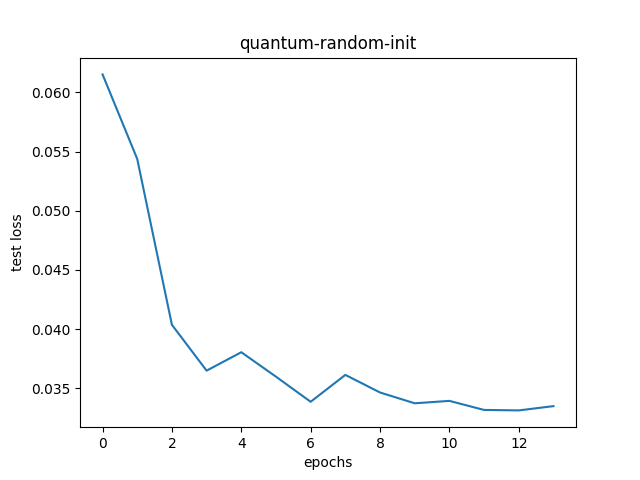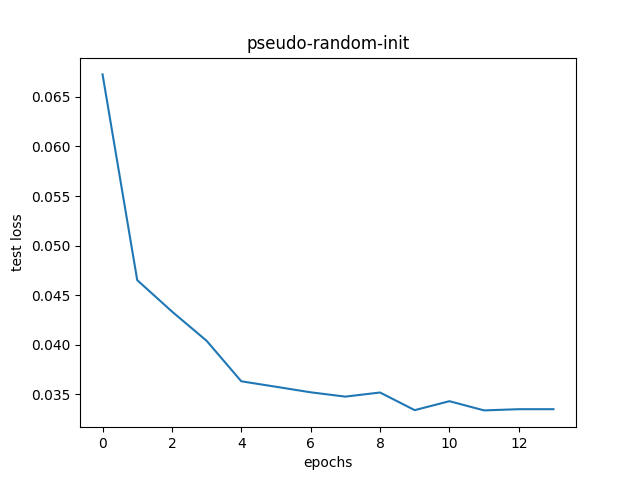This repository compares quantum initialization and
pseudo-random initialization for a convolutional neural network
on the MNIST digit recognition problem.
The idea is to evaluate the quality of the pseudo-random
numbers commonly used to set up neural networks before training.
Quantum computers can produce perfect random numbers
by measuring Hadamard-transformed QBits.
This an important difference from GPU or CPU randomness, which is
typically generated using some form of the Mersenne-Twister
(https://en.wikipedia.org/wiki/Mersenne_Twister).
The get_quantum_uniform function from qrandom.py implements
a quantum random number generator.
In the academic
literature, this idea has previously appeared in
https://link.springer.com/article/10.1007/s00500-019-04450-0 .
The code in this repository repeats a variant of their
CNN experiment.
The code in the repository depends on Qiskit and PyTorch. To install these dependencies on the command line type
$ pip install qiskit
$ pip install torch torchvision
Head over to https://quantum-computing.ibm.com/ and set up an account. An account token is required to run this code. Take a look at https://quantum-computing.ibm.com/docs/manage/account/ to learn where to find your access key. When you have the token open our python interpreter and run
>>> from qiskit import IBMQ
>>> IBMQ.save_account('insert your IBMQ access-token here.')
to set up your configuration.
Once the environment is set up, use 'mnist.py' to run the pseudo- and quantum initialized experiments by typing
$ python mnist.py --pseudo-init
$ python mnist.py
to run the pseudo-random and quantum-random experiment in that order. The second experiment will take a while, depending on the length of the quantum computer queue.
The plots below show the test set network loss for both experiments.
Occasionally IBMQ may assign you a machine, which produces non-uniform numbers.
You can check your latest jobs at (https://quantum-computing.ibm.com/)
All output bits should have the same probability.
Otherwise, network convergence will likely be negatively affected.
See the plot below for such an example:


